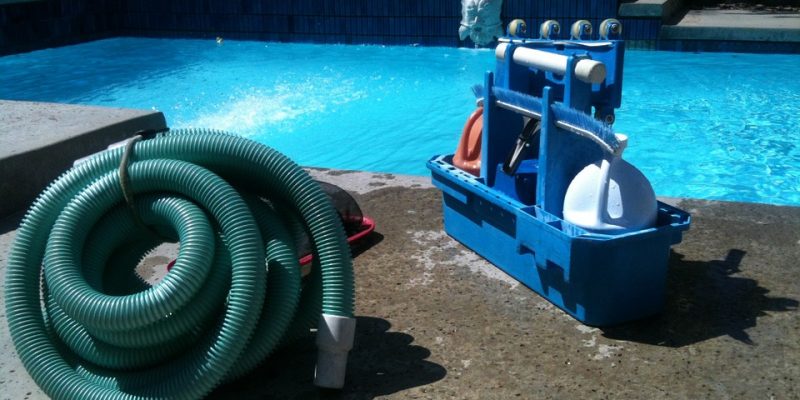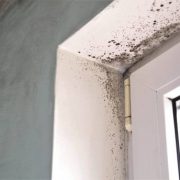Having a pool is exciting. But maintaining it without knowing the proper methods can be challenging. So continue reading to learn about pool maintenance.
Having a clean, balanced, and transparent swimming pool is essential for swimmers’ health. But mineral buildup and unbalanced chemicals are harmful to pool components. Keeping your pool clean is essential for extending your pool’s life.
Here we’ll go over some of the basics you’ll need to get started.
What’s in a Pool?
The interior of the pool is constantly in direct touch with water. Therefore, maintaining a pool’s surface cleanliness is as important as maintaining its water quality.
A pool filtration system removes dirt and impurities from the water, allowing swimmers to enjoy their time in the pool. Unfortunately, your pool water can quickly become polluted if you don’t have a functional filtration system.
Skimmers collect the pool’s surface water, clean and sterilize it, and return it to the pool to keep the pool moving.
The Basic Parts of a Pool
You must understand the essential parts of a pool to care for it properly. Each pool component performs a particular function. Therefore, keeping a pool in good functioning order requires understanding its four primary components.
1. Water
It might be difficult for a beginner to maintain a proper chemical balance in the water. Some kits can help maintain your water and clean it as an alternative.
If you need help keeping your pool clean and healthy, visit your local swimming pool store for additional information.
Purchase a water testing kit if you have trouble keeping your water clean. It will have all of the tests you need.
See what color the water takes on after being filled with pool water. The color comparison table supplied with the test will tell you what it means.
You should test the water at least once per week during regular usage and once a month other times. It is good to do a water test if you have had a lot of rain or your pool’s water level has dropped.
2. Walls
Think about what would happen if your water doesn’t have the proper chemical equilibrium. Bacteria and algae can grow rapidly. These contaminants can pollute your water and damage the walls of your pool, making it slippery and unsafe.
You should clean your pool every two weeks to eliminate any bacteria or algae growth and remove debris from the water.
An automated robotic cleaner like dolphin oasis z5i is an excellent option if you do not have the time or energy to do it manually. Another alternative is to have a self-cleaning pool system installed.
3. Filter System
Your pool’s filtration system is the engine that drives everything else. This is the part that keeps your pool’s water clean and flowing.
The pump is the portion of the pool filter that forces the water to circulate. The filter will remove any dirt, dust, or other impurities from your water that can harm its quality.
The filter protects your pool and the people who swim in it. It prevents the growth of germs and algae, ensuring the water’s safety. A malfunctioning filter system will cause your pool water to become hazy and contaminated if it is not replaced.
4. Returns and Skimmers
Returns and skimmers are another important part of your pool.
There are two types of skimmers in a pool: collecting water and forcing water through the filter when it’s cleaned. Returns are the parts of the pool that bring back clean water.
When you clean these two pieces regularly, they operate better. However, the water will not flow properly if there is a lot of trash or blockage. In the end, you will have soiled water.
This is why you need to backwash and clean these systems regularly. The cleaner it is, the better it works.
Pool Maintenance Supplies
There are a few products you can use to help the upkeep of your pool, depending on the sort of pool you have. As a result, the germs and algae will be kept under control, and your water will remain crystal clear. These are the items you’ll need:
Shock
Algae and bacteria are killed by pool shock, a chemical that oxidizes organic water pollutants.
After a lot of use or at the beginning of the season, shock helps to sanitize the pool. You must remain out of the water for at least 12 to 24 hours after using most pool shocks.
Sanitizers
Chlorine is another common pool sanitizer, although some people dislike the unpleasant smell. Also, bromine can keep your water clean by sanitizing the water and removing bacteria. It’s possible to use natural or enzyme-based sanitizers in saltwater pools.
Stabilizers and Balancing Chemicals
Pool care includes the addition and monitoring of water-balancing chemicals. Pool chemical levels can be thrown off by evaporation, sunshine, rain, and even the presence of oils.
You should check the level once per week using a test kit. Investing in a water stabilizer can help you save money by extending the lifespan of water chemicals.
Algaecides
Algaecides kill and prevent the growth of algae in your pool. However, algae can block your filter system and make your water seem cloudy.
You can find safe algaecides for your pool at a reasonable price. They not only get rid of algae, but they also keep it from returning.
Stain Prevention and Removal
In addition to discoloring your pool walls, water lines and stains can be time-consuming and difficult to remove. To get rid of these ugly stains, you can use stain prevention and pool stain remover solutions.
Metals like copper, silver, and iron in the water can develop scaling on your pool walls, which can cause these stains. You can use stain removal and prevention chemicals to remove the stains and keep them from returning.
Chemical Kit
To maintain your pool, you’ll need to monitor and adjust a variety of chemicals in the water. A pool chemical test kit is the simplest method to check this.
You will get multiple vials and test strips in this set. Fill the vials with pool water and use the chart to compare the colors. This will notify you whether you need to change your chemicals.
Pool Maintenance and Circulation
You should continuously circulate the water in your swimming pool to keep it clean. You can control pool algae and murky water with a high-quality circulation system.
It is ideal if your pump and filters are running all the time. Plan to operate the system for at least 10-12 hours every day, if possible, and if it’s within your budget. You’ll have more than enough time to run your pool’s filtration system and circulate the water at least twice.
Cleaning Your Pool’s Filter System
Dirty swimming pools cannot circulate water at their maximum capacity. Therefore, keeping the filters and skimmer baskets clean is essential to keep the water clear.
Turn off your filter and remove the filter cap to clean these parts. Afterward, remove the basket and clean it out entirely with your hands.
Every month, backwash your filter. Backwashing is a great way to get rid of dirt and sluggish water from your filtration system’s pipes.
Remove the basket from the filter and set it to “backwash” mode. Keep it running for a while until the water is crystal clear. Then return the basket to the filter by turning it off and turning it back on.
Cleaning Your Pool
Regular pool cleaning is an essential element of pool maintenance. However, a few days or even a week of negligence can significantly influence the lifespan of your pool’s equipment.
You can clean your pool with various methods, and it all comes down to your budget. You’ll need at least a net skimmer to remove surface material and a pool brush to clean the walls and bottom to keep your pool clean.
A robotic pool cleaning can help automate most of this work if you have the money. However, it is recommended that you clean your pool at least once a week to remove debris, manage germs, and prevent the growth of green algae.
Use baking soda and water to make a thick paste if you can’t remove a stubborn algae patch. Next, scrub the area with this paste.
Tennis balls can remove oil from your water by soaking up the oil on their surface. Place a pair of fine denier tights around the skimmer basket to trap the tiniest particles.
An automated pool cleaner is an additional option you may want to consider. While this won’t eliminate the need to scrape or skim your pool’s sides, it will reduce the amount of time you spend doing it. You must ensure that your automated pool cleaner cleans the walls and the rest of the pool.
Conclusion
Having a pool at home is a great way to spend time with family and friends while still being close to the comforts of home. Of course, it needs regular maintenance, but that does not imply you will have to spend all of your time cleaning.
Know the functions, check the maintenance requirements, have a proper plan, and you are all set for your pool maintenance journey. Best of all, you can get a robotic pool cleaner to do it all for you!





















